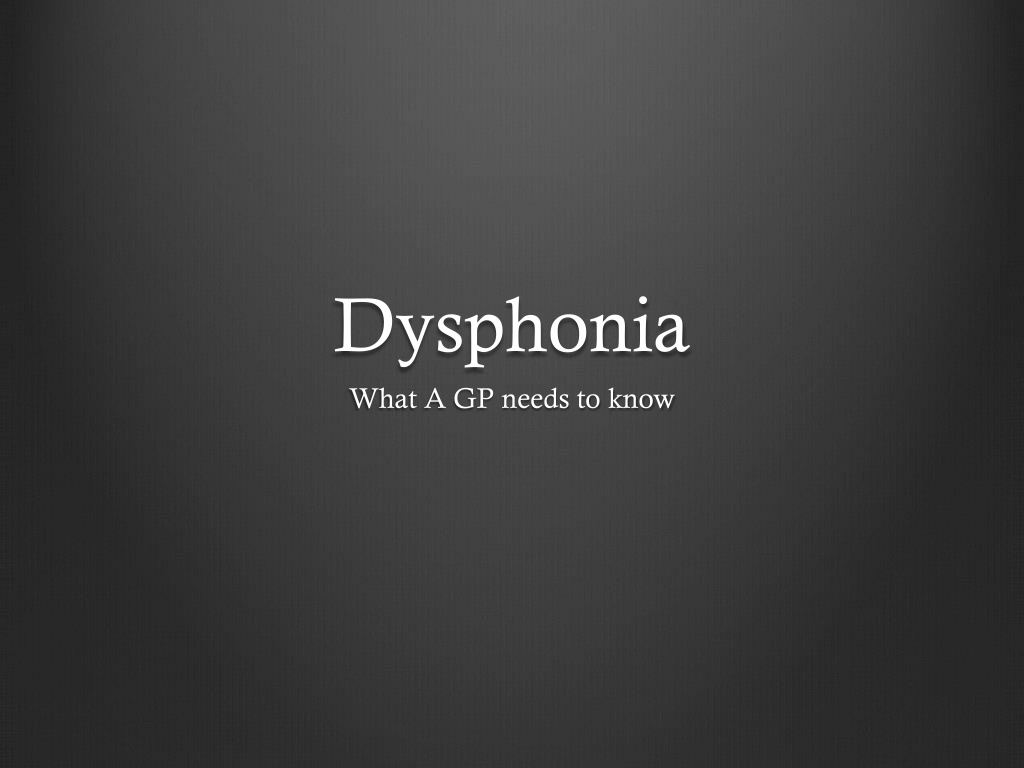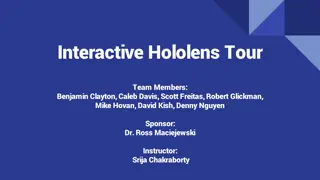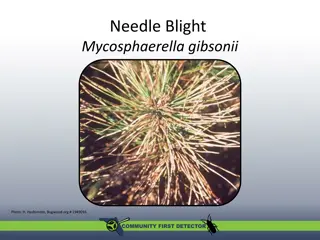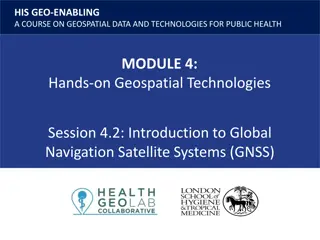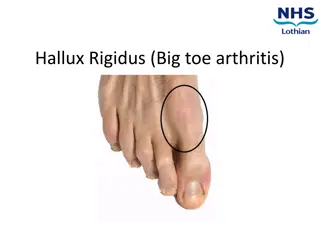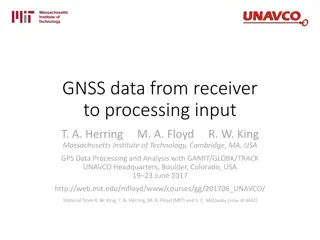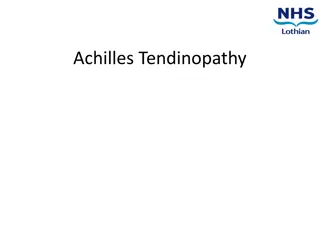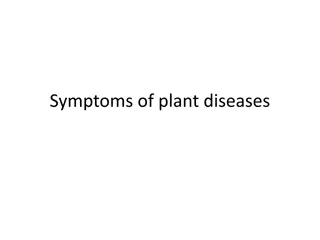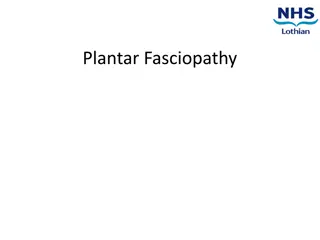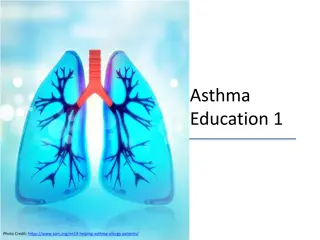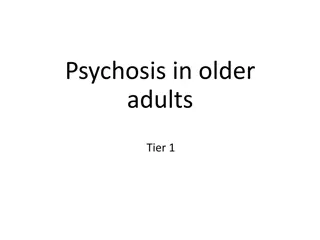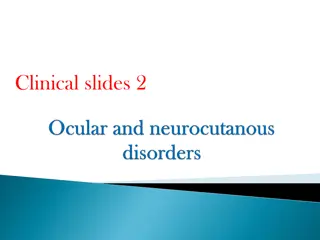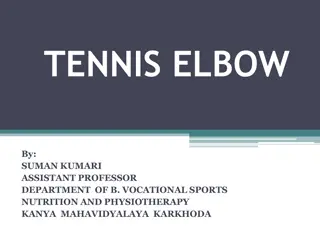Understanding Dysphonia: Symptoms, Causes, and Management for GPs
Dysphonia, a voice disorder affecting vocal quality, pitch, and loudness, can impair communication and quality of life. A case study of a 44-year-old female presenting with hoarseness prompts considerations for associated symptoms, medical history, medications, and examination. Management may involve addressing potential causes like laryngitis and providing guidance on voice use, lifestyle changes, and follow-up.
Download Presentation

Please find below an Image/Link to download the presentation.
The content on the website is provided AS IS for your information and personal use only. It may not be sold, licensed, or shared on other websites without obtaining consent from the author. Download presentation by click this link. If you encounter any issues during the download, it is possible that the publisher has removed the file from their server.
E N D
Presentation Transcript
Dysphonia What A GP needs to know
This is my voice in May 2016 pre treatment
Definition Hoarseness or dysphonia is a disorder of voice where vocal quality, pitch, loudness or effort is altered , thereby impairing communication or reducing voice related quality of life.
Case Study 44yo female presents with hoarseness gradually worsening over the previous week to 10 days , more effort to speak an sounded subjectively nervous History of moderate to severe runny nose (thought to be hay fever) in the previous weeks but no associated fever or cough. Had tried oral antihistamines to try and dry up the feeling of choking after a few days the dysphonia was suddenly worse. What else do you want to know?
History Preceding associated symptoms- URTI, allergy eyes?, Laryngitis Reflux Neurological symptoms- Parkinson's disease, MS ,CVA symptoms, Myasthenia gravis Metabolic thyroid, acromegaly, Malignancy and sarcoid dysphagia, odynophagia, hemoptysis, stridor, weight loss/gain
History Medications inhaled corticosteroids , antipsychotics causing dystonia of the larynx, ACE inhibitors- chronic cough , oral bisphosphonates causing reflux and laryngitis Substance Hx smoking, alcohol Occupation voice demands teacher, doctor, sports coach, singer, clergy, lawyer, call centre operator, radio/TV
Examination ENT exam neck lumps, nodes, pharynx, tenderness of the neck, thyroid exam Neuro tremor
Case study She s a GP. Mother of 2. Coaches the under 7 boys soccer team once a week and games on Saturday No asthma, hay fever and eczema always been mild Minimal alcohol glass of red 3 times a week, tea or coffee once a day, lifelong non smoker
What next ? Laryngitis acute and usually resolved by 2 weeks. Might wait and review in a week. Do you tell her NOT to use her voice ? YES And give her a medical certificate Stop all caffeine and alcohol ? Silent reflux no evidence to prescribe if there are no symptoms of reflux. Antibiotics ? NO Steroids? NO
Case study She returns after 2 weeks ( 4 weeks of dysphonia now). There is no change and she is worse.
What next ? Refer to an ENT Dr for laryngoscopy and Speech therapist Unilateral VC paralysis breathy , tumour invasions compression of the Vagus nerve ( brainstem ,cervical or thoracic) and stroke Benign VC lesions cysts, nodules, polyps Reflux inflammation, mucosal oedema, contact ulcers and granuloma Upon laryngoscopy - some inflammation about the cords
Case Study Speech therapy once a week for next 8 weeks. Increased hydration, voice clearing technique reverse candle blow 2nd look at cords and Skype with Melbourne voice clinic speech therapist. Also not sure so booked into Melbourne clinic but not available for 6 weeks!! Trying to trick the voice, home exercises were hard and not seeming to make a great deal of difference, Voice very quiet and using a microphone at work. Accessory muscles of the neck overworked. Tension headaches ++
Case Study Strobe ( assesses the wave along the vocal cord) in Melbourne. Spasms noted in the adductor muscle and minor of the abductor. Saying 80-90 Reactively depressed . Socially withdrawn. Stopped coaching soccer. Cannot be heard at social events. Diagnosis ??
Spasmodic Dysphonia Rare 30 per million Unknown cause. 30% associated with a preceding URTI Women more than men and 4thdecade of life more common Famous people- Jenny Morris, American cartoonist Dilbert ( Scott Adams) Treat with focal Botox injections in the TA muscle (vocalis) for Ad SD and into the posterior CA For Ab SD ( more difficult injection ) .Indivualised ? Every 6 weeks to 3-6 months. Voice therapy used in conjunction. USA recurrent laryngeal nerve reimplantation surgery - new
Anatomy of VC Functional anatomy of the vocal cords The larynx, or voice box, has multiple intrinsic muscles that control movement of the vocal folds. All of these muscles are innervated by the recurrent laryngeal branch of the Valgus nerve (CN X) except the cricothyroid muscles, which are innervated by the external branch of the superior laryngeal nerve, which is also a branch of the vagus nerve. The cricothyroid muscles function to elevate the anterior arch of the cricoid cartilage and depress the posterior portion of the thyroid cartilage lamina. This produces tension and elongation of the vocal cords, resulting in higher-pitch phonation. The posterior cricoarytenoid muscles function to rotate the arytenoid cartilages laterally, thereby abducting the vocal cords. Their action opposes that of the lateral cricoarytenoid muscles.
Anatomy of VC cont.. The lateral cricoarytenoid muscles function to rotate the arytenoid cartilages medially, thereby adducting the vocal cords. The main function of the transverse arytenoid muscle is adduction of the vocal cords. The thyroarytenoid muscles function to draw the arytenoid cartilages forward, thereby relaxing and shortening the vocal cords, while also rotating the arytenoid cartilage inward, thus adducting the vocal folds and narrowing the rima glottis. The vocalis part of each thyroarytenoid muscle is contained within the vocal folds on each side. Of note, the only muscles capable of separating the vocal cords for normal breathing are the posterior cricoarytenoid muscles. Bilateral injury to the recurrent laryngeal branches of the vagus nerve (CN X) results in an inability to abduct the vocal folds and causes difficulty breathing.
Case study 5 Botox injections. Specialist ENT (2000km away) and Neurologist (visits from 400 km away) perform them. Voice not normal but spasms are temporarily halted. Sfx swallowing issues water and or food. Timing of injections for life events - holidays ,work etc and availability .
